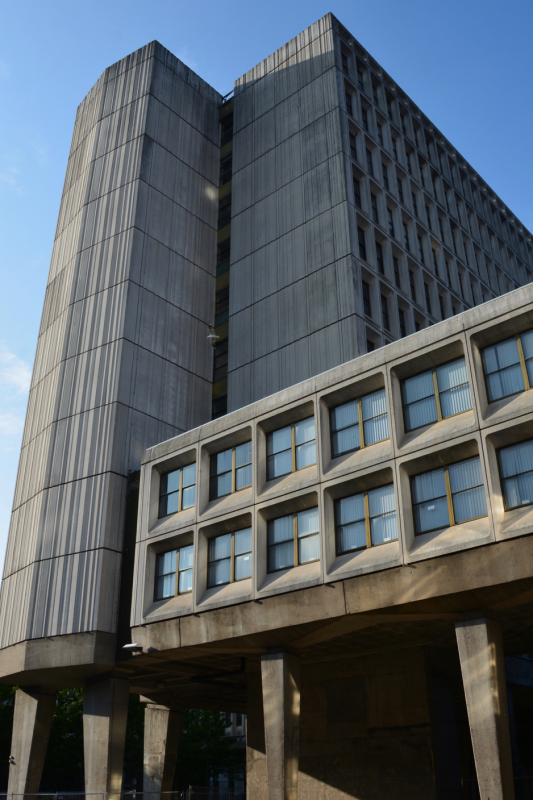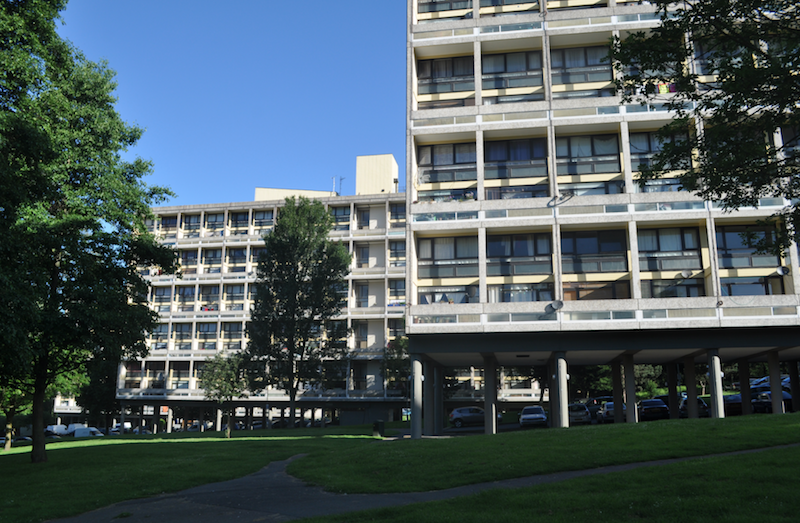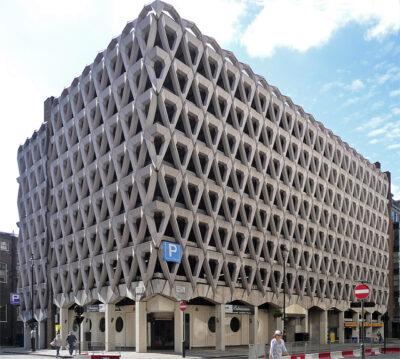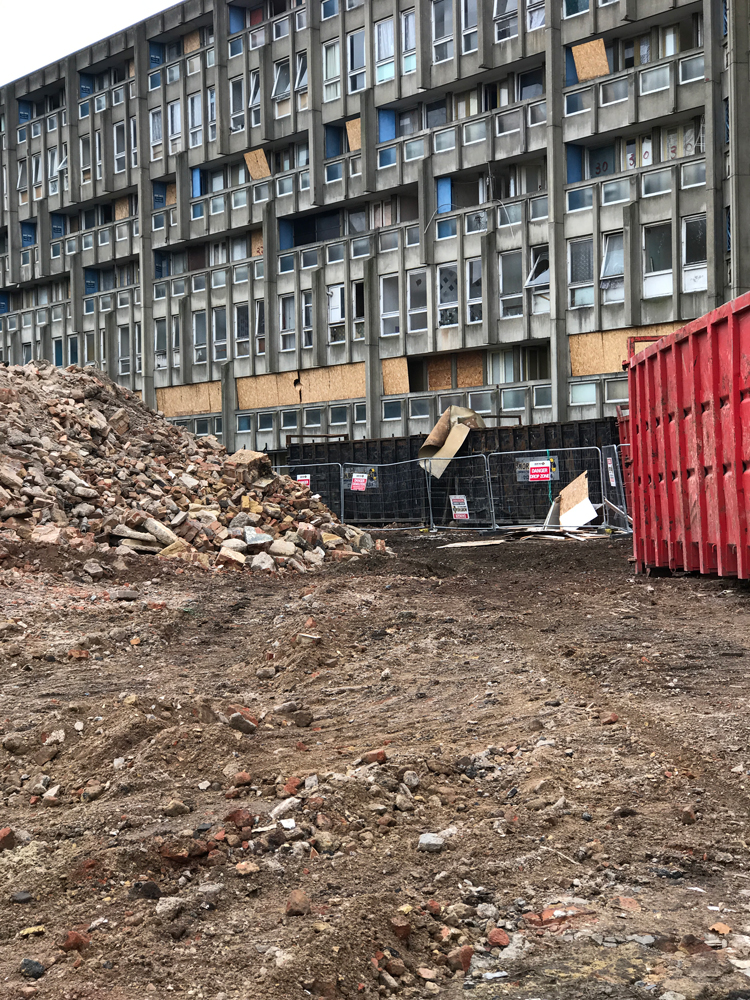Dial House
By Greyscape
8th August 2018
Dial House Glasgow
In Glasgow built in 1969 at a cost of £2.5 million to hold the analogue telephone trunk call technology of the 1970s for the General Post Office. The GPO’s telephone business later became British Telecom which was sold to the public out of government ownership and is today called BT. Dial House has over 24,000 square metres of space. It’s huge. Yet looking at the windows you get a sense that much of the space is empty, perhaps abandoned.
Dial House could almost be a concrete monolith but is saved by those elegant, slim pilotis, effortlessly elevating its tens of thousands of tons of concrete off the ground. Dial House occupies the land, it may rest on these seemingly feeble pilotis but it stretches across a road, encompasses a vast courtyard and presents an uncompromising 12 storey slab of office windows to Glasgow. It’s trunk rests deep in the earth and there are, it has been alleged, seven or more basement levels.
First thing we wanted to discover, was who was the designer, the architect and what else did they design. But search as we might, no luck. The architects, the engineers, the plans all seem shrouded in mystery. We even went to the BT Archive in Holborn, London and found no clues.
What does come up in web searches is that under the building there are tunnels. See http://www.hiddenglasgow.com/forums/viewtopic.php?t=135 and http://www.glasgowlive.co.uk/news/history/inside-secret-tunnel-network-glasgow-12828668, and, most recently, https://www.glasgowlive.co.uk/news/history/look-inside-glasgows-secret-tunnel-12828668 which suggests that Dial House and the tunnels supposedly underneath it were built as part of a network of communications in case of an atomic war. In 1996 BT put up for sale a facility under Holborn Kingsway in central London. It was a communications centre but was obsolete, it simply wasn’t deep or protected enough to survive modern atomic weapons. In Manchester and Birmingham, there are facilities known as Anchor and Guardian, respectively, serving the same purpose. It is well-known that London is riddled with tunnels, many dating from WWll. Might some of these still be in use? Are there similar networks under other British cities?
The only communications equipment that would be sure to survive the effects of an electromagnetic pulse, a side effect of atomic detonations in the atmosphere, is the simplest of telephone equipment, old-fashioned direct lines and wind up equipment. Perhaps that is what is down beneath Dial House and running through the damp and dank tunnels spreading out underneath. And perhaps the suggestions on these various websites that the tunnels are flooded or abandoned is simply to disguise the fact that these facilities are still maintained in case of nuclear war.
It isn’t our purpose to investigate tunnels and shelters and bunkers. Of course, anyone interested in concrete architecture recognises that it’s a material used in fortifications and that some of these, like the Admiralty Citadel near Horse Guards in Whitehall, have even acquired a patina of attractiveness, through age, and ivy in that case, but our interest in concrete is in its use for constructing buildings of beauty and social utility not as instruments of war.
Photo Credits: Howard Morris











